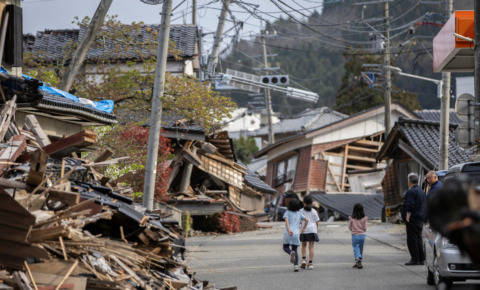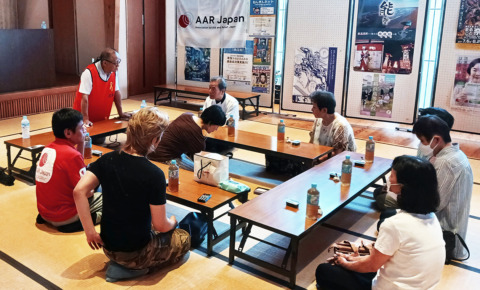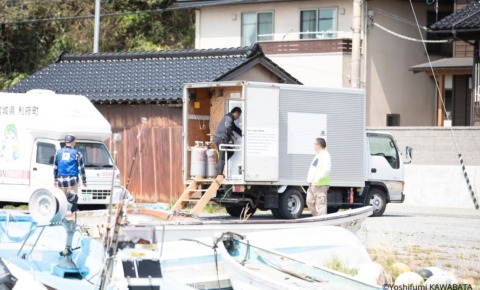Understanding “invisible disabilities” during disasters is a challenge: Noto Peninsula Earthquake
25/03/2024
Reconstruction efforts continue in areas affected by the Noto Peninsula Earthquake. AAR Japan (Association for Aid and Relief, Japan) is focusing on providing support to welfare facilities for people with disabilities and their households. One of the problems that came to light was the concerns of survivors with “invisible” disabilities such as developmental and mental disorder, which are not apparently noticed compared to physical disabilities. It is a problem that occurs not only in Noto Earthquake, but also in every large-scale disaster. Here are some of the serious voices from the affected areas.
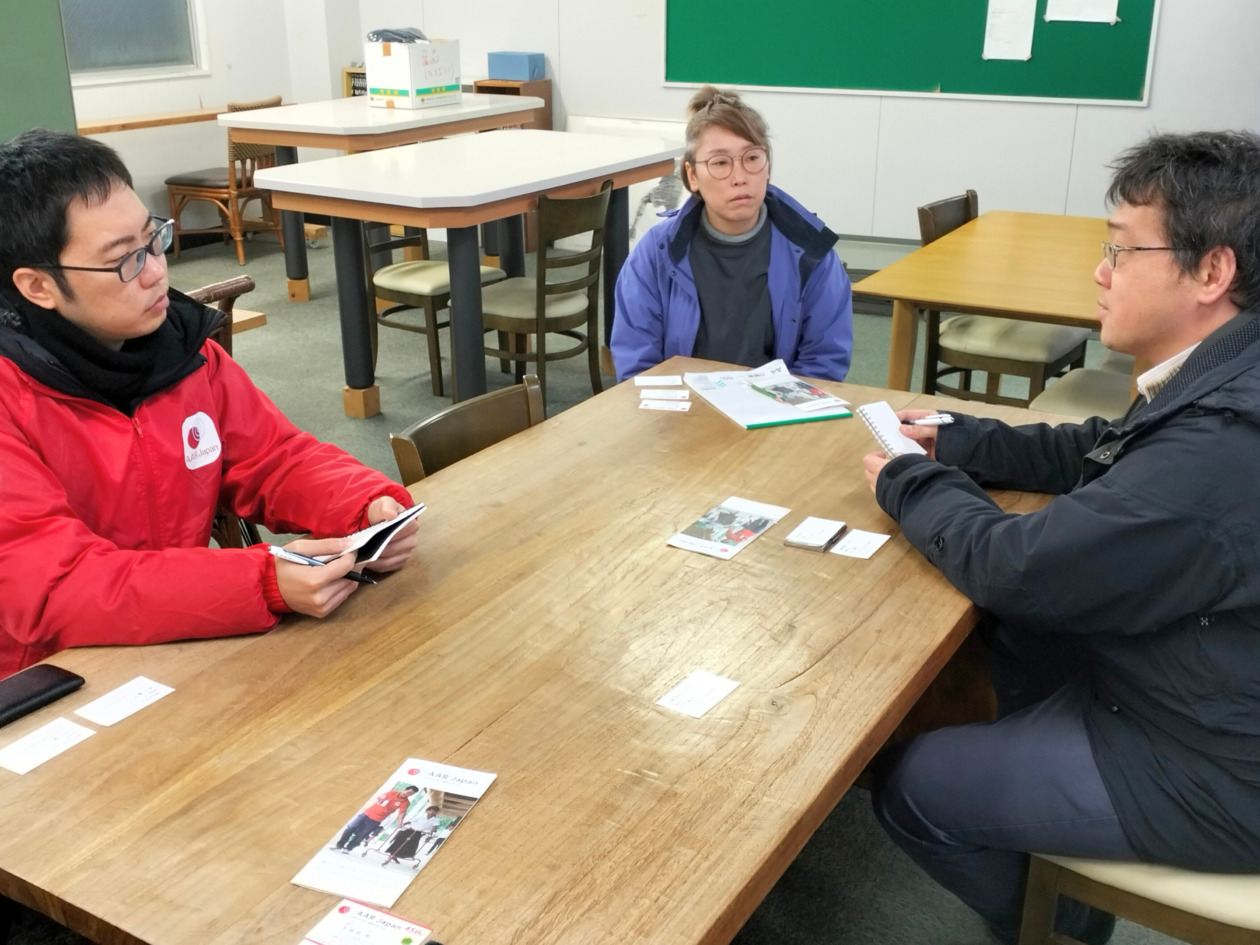
Junko Matsushita (center) of a support facility for people with disabilities “Tomoe”, explains the difficulties of people with disabilities living in evacuation centers=Nanao City, Ishikawa Prefecture
“It was very difficult to let people understand the trait of mental disorder in crowded evacuation centers”. Junko Matsushita, administrator of “Tomoe” (Nanao City, Ishikawa Prefecture), which is a general incorporated association that supports people with disabilities and those who have problems such as school refusal and withdrawal, sighed deeply.
She said, “While spending two months in a shelter with the general public, friction has been caused between other survivors and people with disabilities from small things, and people with disabilities were called ‘crazy guys’”.
Developmental and mental disorders are difficult to be noticed at first glance and are not easily understood by others. The change in environment could cause them to panic and shout loudly. Therefore, it is difficult for them to adapt to group living in evacuation centers when a disaster strikes, which often leads to problems.
After troubles were caused at the shelter, Mrs. Matsushita and other staff members kept their eyes on their two patients for a while. However, one of them had to leave the shelter and use a short stay at another welfare facility, and the other had to move to a different shelter.
“We wish that they could spend time together regardless of disability, but … it is difficult”. She says that she has realized the importance of creating places such as “welfare shelters” where people with disabilities can evacuate comfortably during disasters.
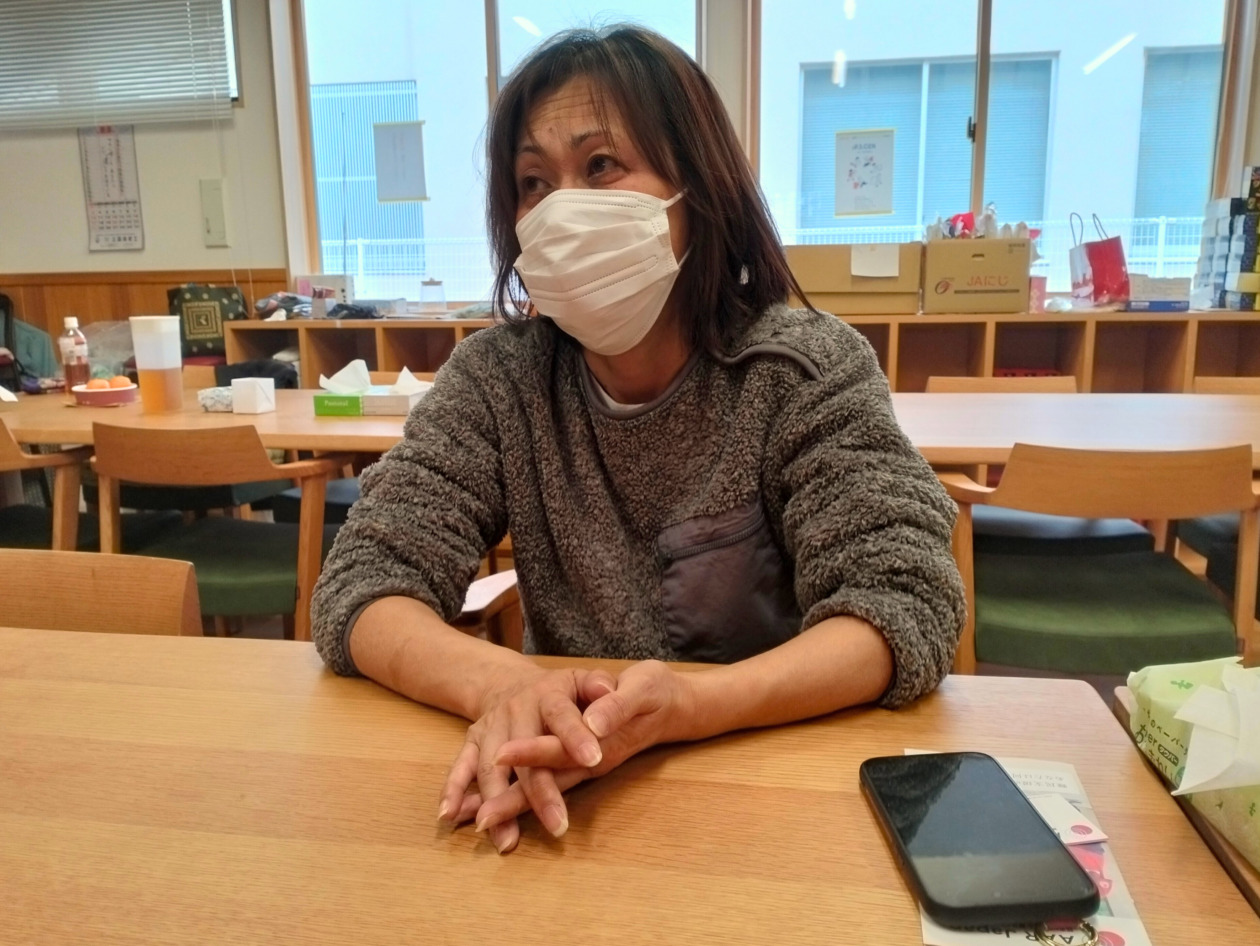
Ayano Yamazaki, talking that she had to stay in the car because of her second son with autism, in Suzu City, Ishikawa Prefecture, Japan
Families of people with disabilities are also having a difficult time. A two-story house in Suzu City with a red paper with a word “Danger”(which means the house is damaged and is in a dangerous state)written on the front door. Ayano Yamazaki (60 years old), who lived here with her family of four, was forced to stay in the car for nearly two weeks with her second son (32 years old) with autism, together with her husband and oldest son as well. When they arrived at the evacuation center where many people gathered, her second son stubbornly refused to get out of the car. He could not speak well and was easily get stressed by unfamiliar places and crowds. “One of us had to stay with him, so the family had to take turns staying in the car at night while spending daytime at the shelter.” she said.
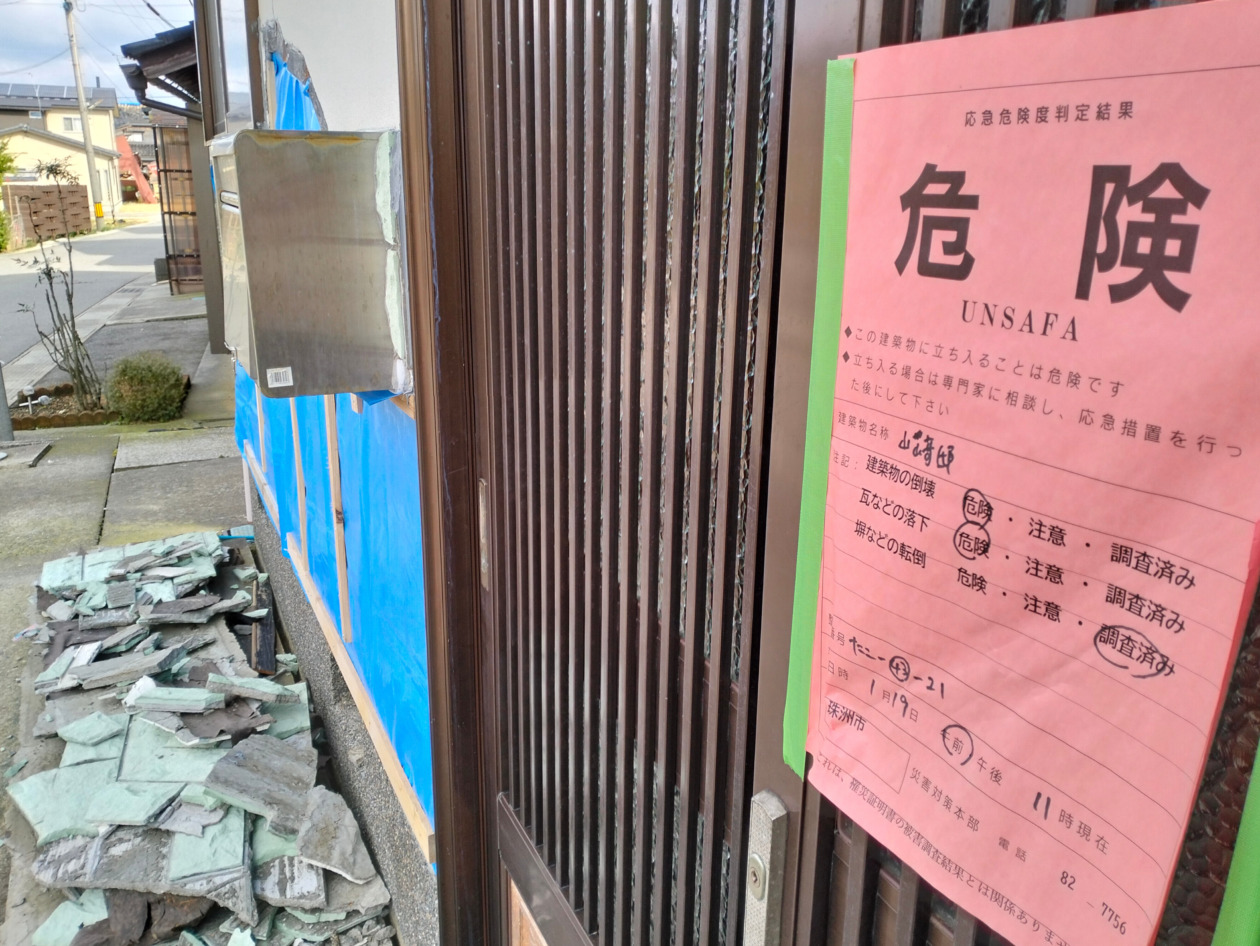
The front door of Mrs. Yamazaki’s house with a red paper with a word “Danger” written on it
Two weeks later, they moved to a relative’s house in Kanazawa City, but things did not go well there either. “Even though it was a relative’s house, it was not our house. So I had to tell my second son not to touch the light switch without permission. I had to scold him often and he started to react violently, so I thought it would be better to go back to our house” she said.
They returned to the shelter again in late January, but were forced to stay in the car again for several days. And they were introduced through a welfare social worker to the “Sazanami”, a multifunctional welfare service center for people with disabilities, which is a local welfare shelter.
The facility has a large private room on the second floor. Her second son, who did not want to get out of the car at the evacuation center, got out easily when they arrived at the “Sazanami” and spent time peacefully in his room. He had once attended a welfare facility after graduating from a high school for the people with disabilities, but had to leave due to fears of facility administrator that he would get into trouble with other users.
“At the time of disasters, everyone was occupied with their own problems. We are very grateful to have been provided with a place where people like my second son can evacuate peacefully until they move into temporary housing”, Mrs. Yamazaki said looking relieved. More than 10 other families of people with disabilities are staying at the “Sazanami”, and AAR delivered rice to the facility.
On the other hand, the “Tomoe” plans to accommodate people with disabilities who are forced to live in evacuation centers, and to renovate their vacant facilities as evacuation sites in case of future disasters. AAR is considering to support their plan. We ask for your cooperation in AAR’s support for the Noto Peninsula earthquake.
Please support
We appreciate your kind donation for our emergency relief efforts in Noto Peninsula Earthquake.
News / Report
Category
Year
